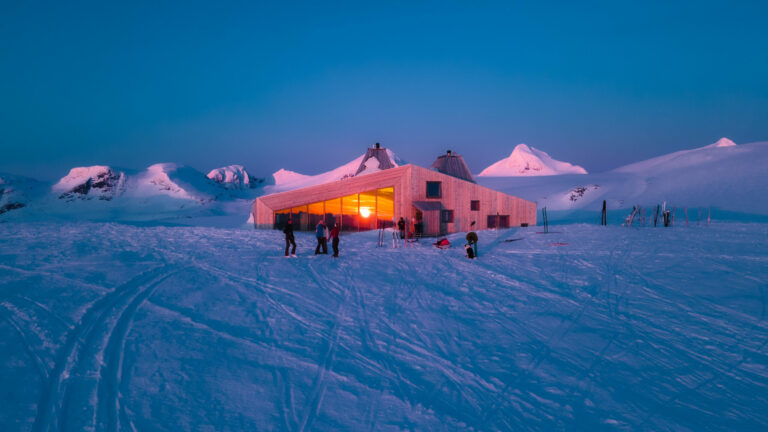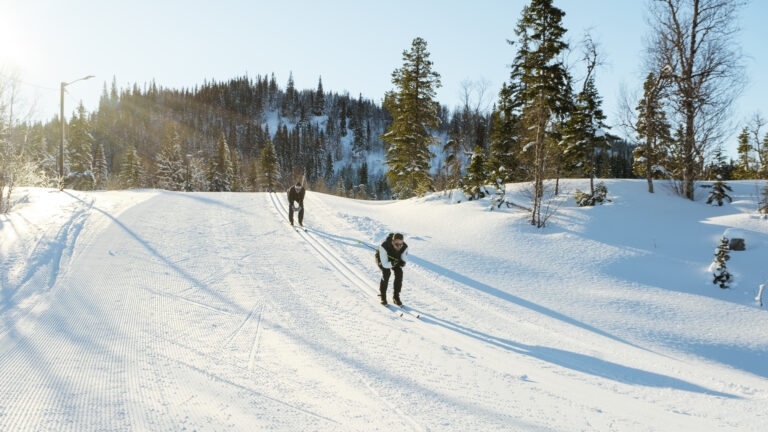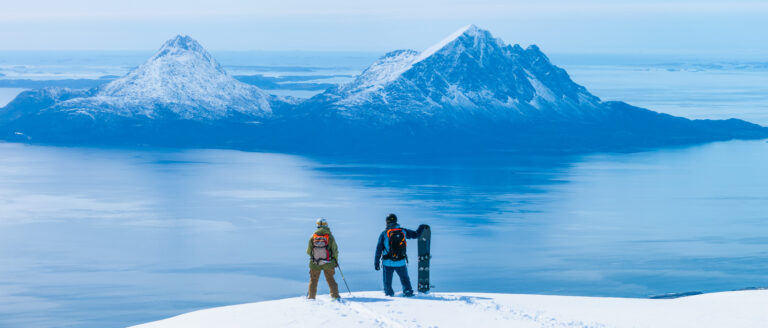Ski touring: Rabothytta 1200 m.
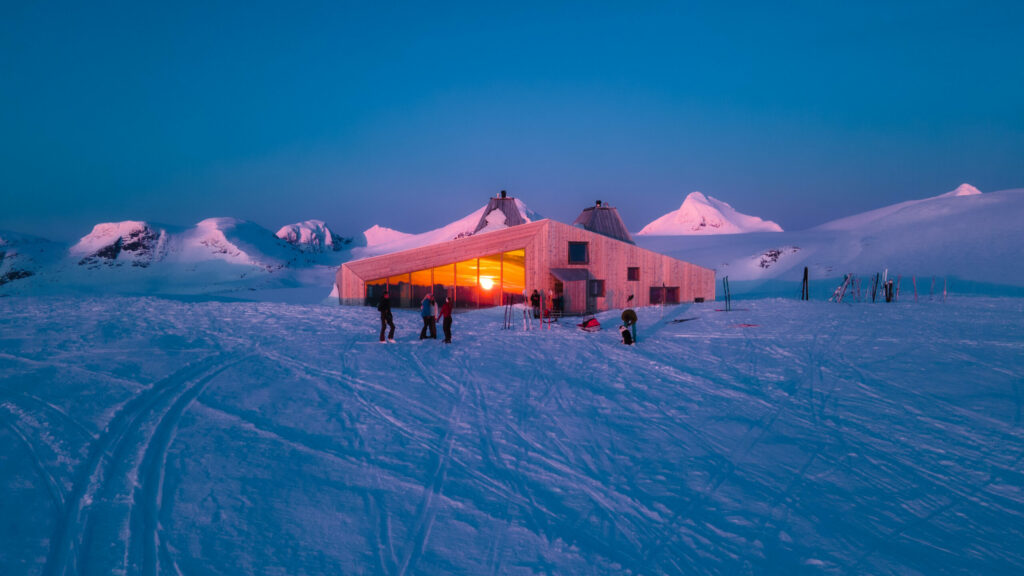 Emilie Solbakken / Visit Helgeland
Emilie Solbakken / Visit Helgeland
If you’re used to traveling in the high mountains during winter, a ski trip to Rabothytta is a uniquely wonderful experience.
Key info
Difficulty: Challenging, long hike with some steep terrain.
Distance one way: 9 km
Elevation gain: About 1000 m
Duration one way: 3 – 5 hours
Season: December – may
Trailhead: Winter parking at the innermost part of Leirskardalen.
Special precautions:
Rabothytta is an unmanned DNT cabin. It is locked, and you must be a member of DNT and have their cabin key to gain entry. Conditions can be varied and challenging, especially early in the season. We recommend bringing crampons for use on icy sections and a sturdy shovel in case you need to dig your way to the cabin.
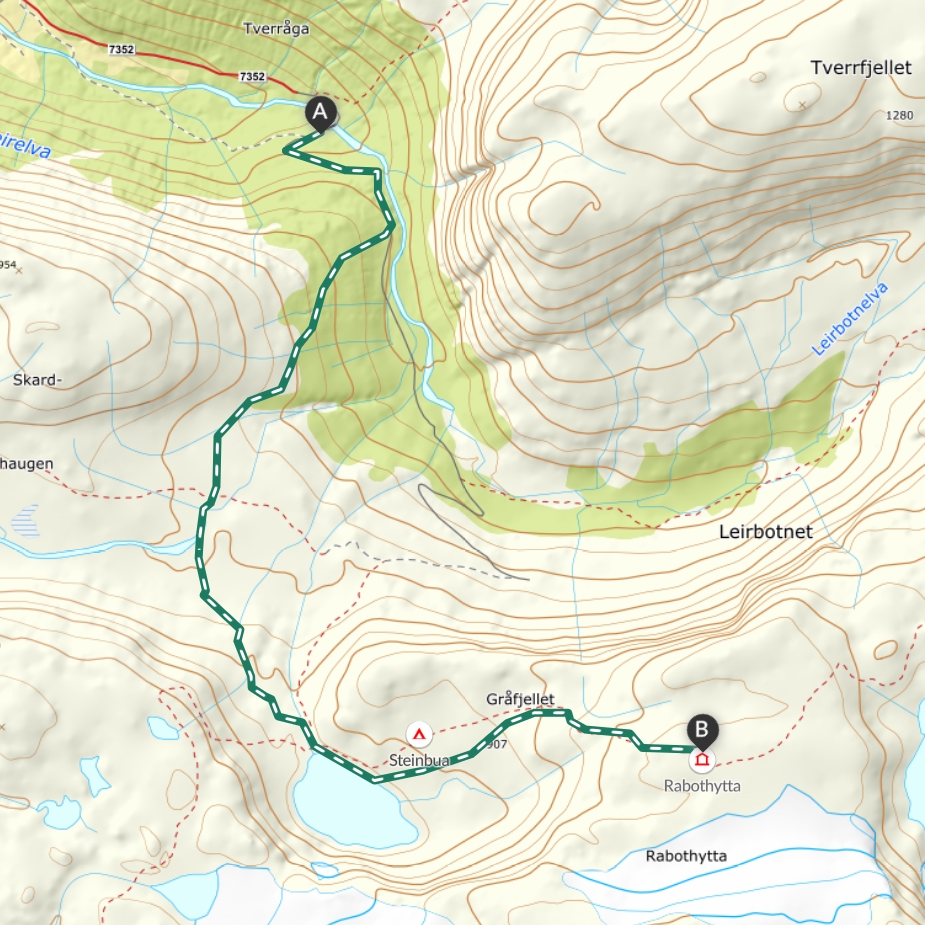 UT.no / Norgeskart
UT.no / Norgeskart
A ski trip to Rabothytta in winter is for those experienced in mountain travel. The journey starts at the winter parking lot in Leirbotnet in Leirskardalen. From here, you can choose to follow the road all the way up to the summer parking lot and follow the summer route, or you can veer off the road after about 1.3 kilometers and head towards Skardhaugen before traversing towards Mørkbekktjønna. This route is outlined in this description. There are no maintained trails or marked routes in winter, so you must navigate, assess the terrain, and make safe choices on your own.
Late in the spring, you may be able to drive further along the gravel road, but be aware that the road is not plowed, so if it snows while you’re on your trip, you could get snowed in. Always check the weather forecast before you go.
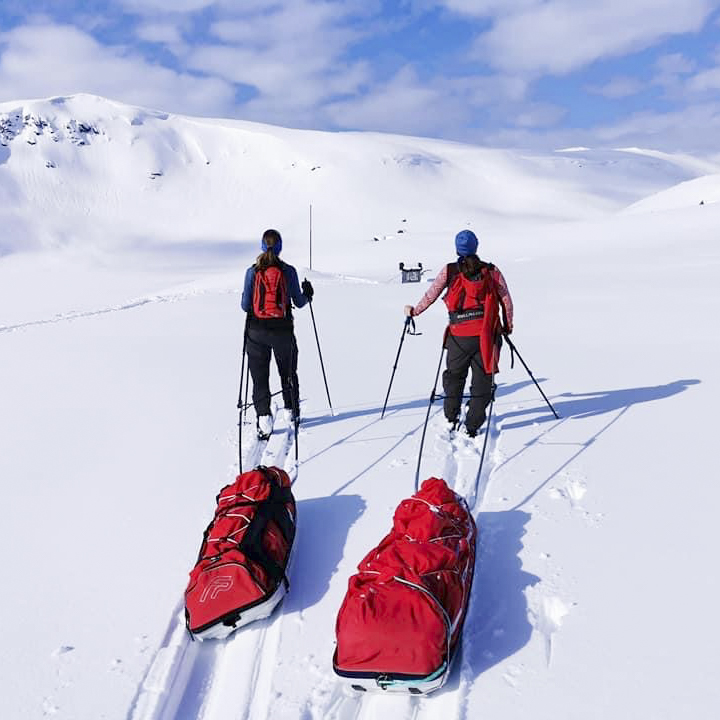 Kristin Johansen
Kristin Johansen
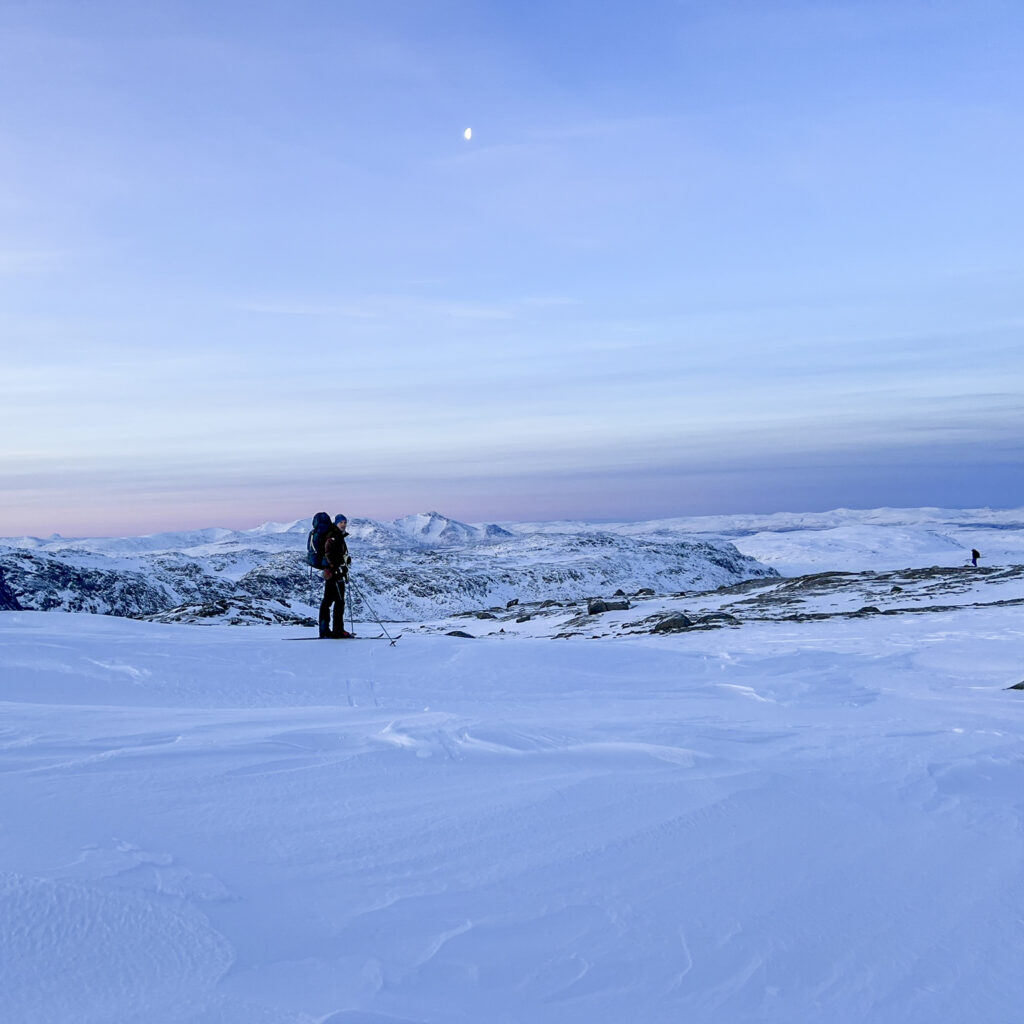 Kristin Johansen
Kristin Johansen
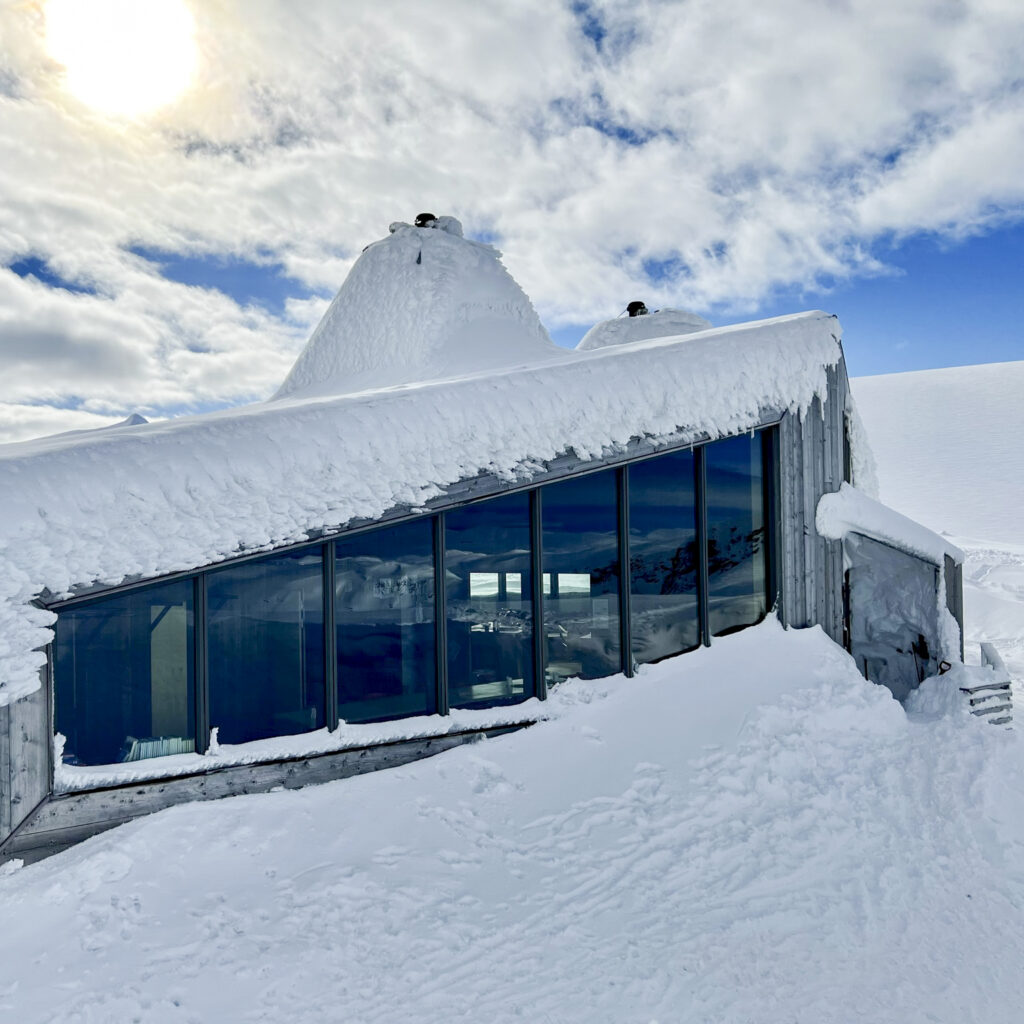 Kristin Johansen
Kristin Johansen
Rabothytta is a DNT-cabin owned by Hemnes Turistforening. As a member of DNT, you can book a stay on their website.
It’s also possible to use the idyllic Inderdalen Gård in Bryggfjelldalen as a starting point.
Find the tour description for Innerdalen to Rabothytta on ut.no
Find the hike description for the summer route to Rabothytta
Plan your trip well
- Route choices should be made with safety in mind, considering the current conditions and your group’s skills.
- Always check both the weather and avalanche forecasts on the day of your trip.
- Utilize maps that detail avalanche zones and release areas, such as those available on UT.no or Fatmap.
- If the weather turns or conditions worsen unexpectedly, have an alternative hike or activity ready as plan B.
- Remember, enlisting a local professional guide will streamline this process, allowing your group to focus more on the experience and less on the logistics.
Carry the necessary gear
- Equipping yourself with appropriate clothing and gear is essential. Be prepared for weather changes and bring extra clothes in case the weather worsens or in case of injuries. In the wild terrains of Helgeland, it might take time for help to arrive, making the risk of hypothermia a real concern.
- Even if you’re not venturing into avalanche-prone terrains, carrying an avalanche transceiver, probe, and shovel is always a wise precaution.
A mountain guide enriches the ski trip
- Engaging a local, professional guide can greatly enrich your experience. Well-acquainted with the local terrains and conditions, guides expertly plan routes that cater to your group’s composition and adapt to the day’s weather and conditions. Their adept skills in assessing conditions on the go ensure you traverse safe and enjoyable paths, both ascending and descending.
- This way you have less planning and less to concider, and more time to just enjoy your journey.
Useful Links:
Important avalanche safety information for ski touring in Norway from Varsom.no
Weather Forecast on YR.no
Avalanche Warning for Southern Helgeland on Varsom.no
Avalanche Warning for Northern Helgeland (Svartisen) on Varsom.no
The «Help 113»-app from Norwegian Air Ambulance
Mountain Safety Rules on DNT.no
Packing list for skiing in the mountains from DNT.no
Thank you for respecting the local communities, and for helping us preserve the natural beauty of Helgeland!
Please:
- Strive to leave no trace of your visit. Bring back all your rubbish, including used toilet paper, and discard it in the nearest rubbish bin.
- Plan your toilet visits and use the opportunity when you pass a toilet. In the wilderness, make sure you are not a nuisance to others.
- Respect the local wildlife. Keep a good distance from wildlife, livestock and birds. Keep your dog leashed.
- Respect private property. Keep a respectful distance from houses and cabins.
- Show good boating sense. Keep a good distance from shore and drive at a low speed, especially when you are close to anyone or anything on the water, including birds or animals. Avoid loud and disturbing engine noise. Be aware that some islands and nature reserves are important nesting sites, and that going ashore is prohibited during the nesting season.
- Follow the Norwegian Mountain Code (Fjellvettreglene). Plan your excursion according to the weather forecast, your skills and experience.
- Join a guided excursion or consider hiring an experienced guide, especially when you don’t have sufficient experience or knowledge to guarantee a safe trip.
